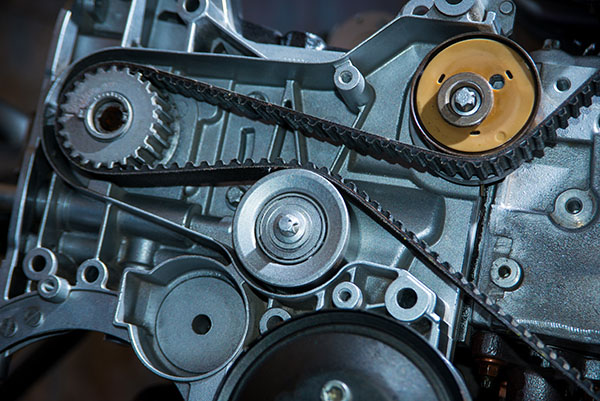
In the intricate dance of an internal combustion engine, timing is everything. The synchronized movements of pistons, valves, and other components are crucial for efficient power generation. At the heart of this precision lies the timing belt, a remarkable invention that revolutionized engine design and performance.
This blog delves into the fascinating journey that led to the creation of the timing belt, exploring the driving forces behind its development and its pivotal role in the automotive world.
The Need for Precision
In the early days of the internal combustion engine, mechanical timing was achieved using gears and chains. However, these mechanisms had limitations, such as noise, friction, and maintenance challenges. As engine technology evolved and higher RPMs (revolutions per minute) became desirable, a more refined solution was sought to ensure accurate timing and smoother operation.
The Creation of the Timing Belt
The origins of the timing belt can be traced back to the mid-20th century, a time of rapid innovation and experimentation in the automotive industry. Swedish engineer Martin Lidén is often credited with pioneering the concept of the timing belt in the 1940s. Lidén's work aimed to address the shortcomings of traditional timing mechanisms and develop a more reliable and efficient alternative.
Lidén's breakthrough was the use of a toothed rubber belt to drive the engine's camshaft, ensuring precise synchronization between the crankshaft and the camshaft. This innovation eliminated the need for lubrication, reduced noise, and minimized the risk of metal fatigue associated with chains and gears. The inherent flexibility of the rubber belt allowed for smoother motion and contributed to quieter engine operation.
Advantages and Adoption
The timing belt's creation marked a significant milestone in engine technology for several reasons:
- Reduced Friction and Noise: The rubber-toothed design of the timing belt dramatically reduced friction compared to traditional chains or gears. This not only increased engine efficiency but also resulted in quieter engine operation.
- Less Maintenance: Timing belts require less maintenance compared to chains or gears, as they do not need regular lubrication. This led to lower ownership costs and increased convenience for vehicle owners.
- Higher RPM Potential: The timing belt's lightweight construction and reduced friction allowed engines to achieve higher RPMs without compromising on precision.
- Improved Engine Performance: Precise timing led to better combustion, improved fuel efficiency, and reduced emissions, making the timing belt a key player in enhancing overall engine performance.
Belt or Chain Replacements? Give Us A Call!
If your timing belt snaps or the chain is due for a change, contact us at B&C Auto Center! We will gladly answer your call for help and get you in the shop as soon as possible!